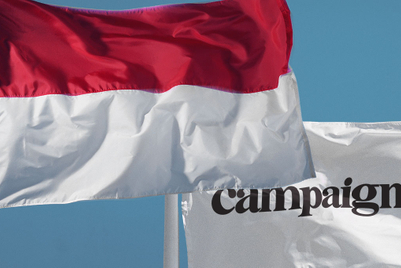
As one of Asia’s biggest, and still growing, tobacco markets (according to Kookmin Ilbo, 45 per cent of adults over 19 smoke), the latest state-sponsored marketing drive focuses on smoking etiquette, rather than on the harmful consequences of smoking. And while the campaign retains an anti-smoking message, its subtle tone marks a significant change in direction from the previous initiative, which aggressively urged people to ‘say no’ to cigarettes.
However, Steve Yi, head of strategic planning at Grey Korea, suggests that far from deterring smokers from lighting up, the new campaign unwittingly glamorises the habit, with close-up footage of attractive young men and women inhaling and exhaling smoke.
“When young people see this kind of campaign, they just want to smoke another cigarette,” agrees Sangsoo Chong, professor of marketing at Cheongju University. “The idea is good, but the execution is poor and it doesn’t work amid all the clutter.”
Korea’s Government has been accused of foot-dragging when it comes to anti-smoking ads. Korea Tobacco & Ginseng (KT&G), the market’s leading tobacco corporation with 70 per cent market share, is a major source of revenue for the Government, and foreign operators also contribute plenty of tax dollars. Yi says these factors may have slowed a rise in the price of cigarettes (currently around US$2.20 per pack) and the introduction of graphic warning labels that are widespread in other mature markets in the region. What’s more, media agency sources in Korea indicate that spend on anti-smoking campaigns amounts to just $2 million a year, small in comparison with the amount spent in other mature markets.
Social change may also be proving a boon to the industry. T Kim, president and CEO of McCann Worldgroup Korea, attributes a marked rise in women smokers to the increase in single career-oriented females for whom smoking is an expression of their independence. The trend has been noted by tobacco firms, which have introduced low-tar variants targeting women, of between 0.5mg and 1mg, unavailable in other markets. Some, such as Woori Tobacco, claim to use DNA filters to reduce the inhalation of potentially fatal toxins. Euromonitor research points to a direct correlation between a rise in volume sales and reduced tar in cigarettes. Yi also notes that firms such as Marlboro have redesigned their packaging to be “more feminine, or at least less strongly masculine”.
The Government’s approach differs from the shock tactics used in other markets. Last year, Bates141 in Taiwan presented smoking as a cause of osteoporosis by showing X-ray images of loose bones composed from cigarette smoke, and Singapore’s Health Promotion Board worked with DDB to assail people with graphic images of the effects of cancer caused by smoking. Joe McDonagh, global creative director of Cheil Worldwide, says a similar approach is likely to backfire in Korea. “People really don’t respond well to graphic imagery in social issues marketing. They just turn away. That’s the prevailing cultural attitude, and that’s why you tend to see softer imagery than in other markets.” More effective, he says, would be messaging that connects with an “emotional vein” = something that he believes is not achieved by the current initiative.
Change may be afoot. Kim states that the Government has finally approved the introduction of graphic warning labels, a move he believes will “really make an impact”. After years of ineffective advertising, the authorities seem willing to try new tactics.
Got a view?
Email [email protected]


.jpg&h=334&w=500&q=100&v=20250320&c=1)



.png&h=334&w=500&q=100&v=20250320&c=1)
.png&h=334&w=500&q=100&v=20250320&c=1)


.png&h=334&w=500&q=100&v=20250320&c=1)

.jpg&h=268&w=401&q=100&v=20250320&c=1)



.jpg&h=268&w=401&q=100&v=20250320&c=1)
.png&h=268&w=401&q=100&v=20250320&c=1)

